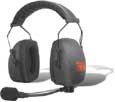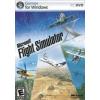T-6 Photos + Study Material T-6 Aircraft Spec Sheet T-6 Article and More Photos
Mission
The T-6A Texan II is a single-engine, two-seat primary trainer designed to train joint specialized undergraduate pilot training students in basic flying skills common to all military pilots.
Features
The T-6A Texan II is a military trainer version of Raytheon’s Beech/Pilatus PC-9 Mk II.
Stepped-tandem seating in the single cockpit places one crewmember in front of the other, with the student pilot in the front seat and the instructor pilot in the rear. A pilot may also fly the aircraft alone from the front seat. Pilots enter the T-6A cockpit through a side-opening, one-piece canopy that has demonstrated resistance to bird strikes at speeds up to 270 knots.
The T-6A has a Pratt & Whitney Canada PT6A-68 turbo-prop engine that delivers 1,100 horsepower. Because of its excellent thrust-to-weight ratio, the aircraft can perform an initial climb of 3,300 feet (1,006 meters) per minute and can reach 18,000 feet (5,486.4 meters) in less than six minutes.
The aircraft is fully aerobatic and features a pressurized cockpit with an anti-G system and an advanced avionics package with sunlight-readable liquid crystal displays.
Background
Before being formally named in 1997, the T-6A was first identified in a 1989 Department of Defense Trainer Aircraft Master Plan as the aircraft portion of the Joint Primary Aircraft Training System, or JPATS. The system includes an integrated suite of simulators, training devices and computer management system.
On Feb. 5, 1996, Raytheon was awarded the JPATS acquisition and support contracts. The first operational T-6A arrived at Randolph Air Force Base, Texas, in May 2000.
The T-6A will be used to train joint specialized undergraduate pilot training students in their primary training phase, providing the basic skills necessary to progress to one of four training tracks: the Air Force bomber-fighter track, the Air Force airlift-tanker or Navy maritime track, the Navy strike track or the Air Force-Navy helicopter track.
The U.S. Air Force is currently training the initial instructor pilot force to phase in the T-6A, replacing the Air Force’s T-37 and the Navy’s T-34C.
General Characteristics
- Primary Function: Primary trainer in joint specialized undergraduate pilot training
- Builder: Raytheon Aircraft
- Power Plant: 1,708 horsepower Pratt & Whitney Canada PT6A-68 turbo-prop engine
- Wingspan: 33.5 feet (10.19 meters)
- Length: 33.4 feet (10.16 meters)
- Height: 10.7 feet (3.23 meters)
- Speed: 350 miles per hour
- Standard Basic Empty Weight: 4,900 pounds (2,222.6 kilograms)
- Ceiling: 35,000 feet (10,668 meters)
- Range: 900 nautical miles (1,667 kilometers)
- Crew: Two, student pilot and instructor pilot
- Armament: None
- Date Deployed: May 2000
- Unit Cost: $4.5 million
- Inventory: Active force, 372 aircraft by 2010 (current acquisition plans)












